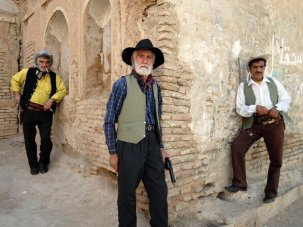The films of Samuel Khachikian have, as the director’s name suggests, a strange ambiguity. One of the father figures of Iranian cinema, Khachikian was for 40 years synonymous with popular genre films inspired by Hollywood and enjoyed by big audiences. But his formal innovations and fluid handling of genres not only expanded the possibilities of cinema, but reflect the specific social and political tensions of a country building to a revolution.
Hollywood style in modern Tehran
Tehran Noir, a retrospective of Samuel Khachikian’s films, will screen at Il Cinema Ritrovato in Bologna, 24 June–2 July 2017.
Khachikian was dubbed the ‘Iranian Hitchcock’, a title he disliked, and in the 1950s and 60s the premieres of films would cause traffic jams. New cinemas were opened with the latest Khachikian picture.
Khachikian’s films provide us with images of a bygone era in Iran. Cadillacs roaring through the streets; women in skirts parading to the next house party; bars open until the small hours of the morning; dancers grooving to the swing of a modernised, post-coup Tehran, which was soon to collapse into revolution. The films are part-documentary, and partly a product of Khachikian’s fantasy of an Iran which has successfully absorbed Hollywood style.

Samuel Khachikian
Credit: Courtesy of Film Monthly
The films were unique in the way in which they could almost be passed off as foreign productions. His classic Midnight Terror (1961) was reportedly bought and dubbed by the Italians, with added name changes, to make it seem as if the story had been set in Milan. Fully aware of the deep contradictions of this encounter between cultures, however, the films manifest a sense of unease. Khachikian’s attention to the fetishistic celebration of automobiles, fashion and glamorous mansions were so many symbols through which he could reflect injustice, class conflict and identity confusion in Iran.
The 37 films Khachikian made between the early 1950s and the late 90s include melodramas, war films, crime films, musicals, comedies and horror. He brought form and style to a formless national cinema. Empty-handed and under-funded, Khachikian was seen by some as a saviour of Iranian cinema; others judged his work to be derivative. Imitator or innovator, he was certainly imitated by many lesser directors – and no one could deny that Samuel Khachikian was Iranian cinema’s first ‘name above the title’.
An Armenian in Tehran
Khachikian’s parents fled the Armenian genocide and settled in Tabriz, Iran, where he was born in 1923. The stories of the genocide told by his father would inform Khachikian’s work wherever it required macabre and grotesque elements.
When the tumultuous political climate of Tabriz forced the family to move to Tehran, a new world was opened up to Khachikian. How he learned to make films within a short time after his arrival in the capital is a mystery. He claimed that Youssef Chahine sent him film books and the former MGM producer Dore Schary’s book on film production published in 1950 was a source of inspiration. Khachikian had never set foot on a film set or in a film school.
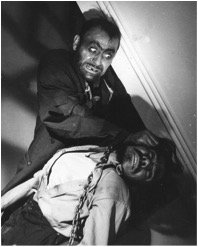
Storm in Our City (1958): Armenian genocide would inform Khachikian’s work wherever it required macabre elements.
Credit: Courtesy of Behdad Amini
Khachikian was one of a group of Armenian-Iranians whose contributions to the Iranian arts are of great significance, notably in the cinema. The director of Iran’s first fiction film, Abi and Rabi (1930), was another Armenian-Iranian, Avanes Oganians. Khachikian recognised the importance of the director’s role by comparing two Greta Garbo films, concluding that under the direction of Rouben Mamoulian – another fellow Armenian – one of the films had been transformed into “something else”, something worth dying for.
In 1953 the influential producer Sanasar Khachaturian asked Khachikian to direct The Return. The film failed but the success of a second film, A Girl from Shiraz (1954), allowed Khachikian to demand more freedom, taking on the responsibility of writing, editing, selecting the music and even, for the first time in Iranian cinema, making a trailer for his films.
The golden years
Khachikian described the experience of making his first two films as “falling into the trap of ‘filmfarsi’ [the Iranian commercial cinema of the time].” However, his third feature, The Crossroads of Events (1955), about a ‘nice young man’ who becomes involved with criminals in order to satisfy the girl of his dreams, proved a big hit.
The film is characteristic of the Iranian cinema of the 50s and has a charming, if uneven quality. Khachikian moves between masterful sequences – including a jewellery heist – and somewhat irrelevant ones. He packs the film with details and cinematic innovations, aiming for a totally visual mode of storytelling. Handicapped by poor dialogue, melodramatic scenes and outdated technical aspects, the film’s success nevertheless established Khachikian as a master of thrillers.
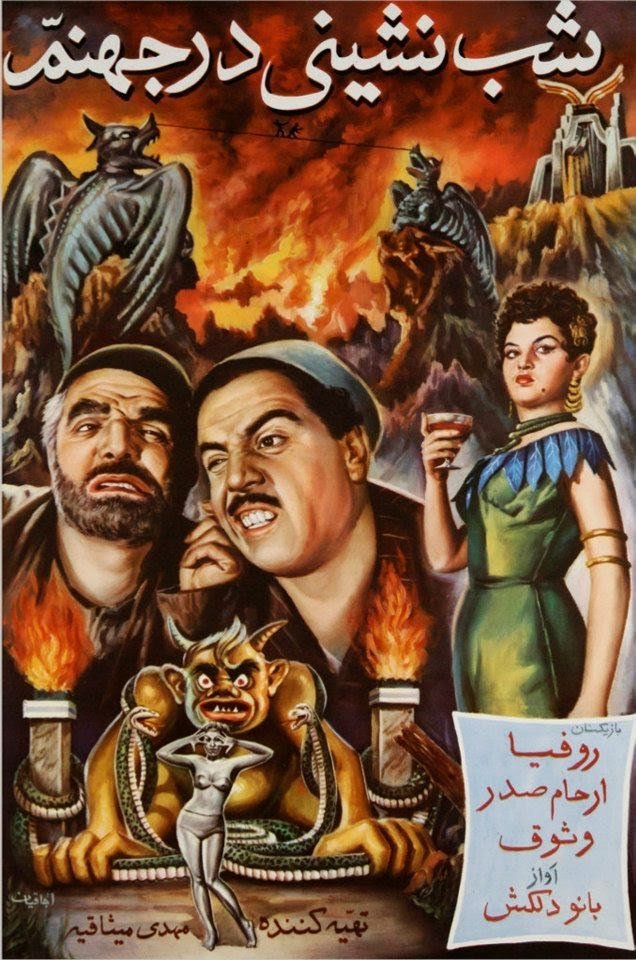
A poster for Party in Hell (1956)
By the late 1950s, Khachikian had perfected a language of his own, with an imaginative use of sound, low-key photography, fast cutting and unusual camera angles, typically used to depict of a world of sin and crime. Yet, he had no fear of experimenting further, as in the immensely popular A Party in Hell (1956), a comedy-horror-fantasy-musical about a loan shark named Haji Agha, who spends a night in hell bumping into celebrities ranging from Tarzan to Hitler. Selected by the Berlinale, it became the first Iranian film ever presented at an international film festival. A Party in Hell takes obvious pleasure in creating a sense of madness and joy, but it carries within it a shrewd social commentary, with an allusion to hell’s fire burning the oil exploited by the Americans.
The confident, flexible handling of genres is also a key element of Storm in Our City (1958), which interweaves the lives of a madman, a homeless woman, a print shop worker and a playboy in the days leading up to Persian New Year. In this wild, sometimes incomprehensible film, one finds Khachikian’s critique of the modernisation of Iran: as something both promising and disturbing. While the film’s expressionist vision is akin to a Universal Studio horror film, it is clear that the ‘monster’ is for Khachikian the creation of an unjust society rather than a mad scientist.
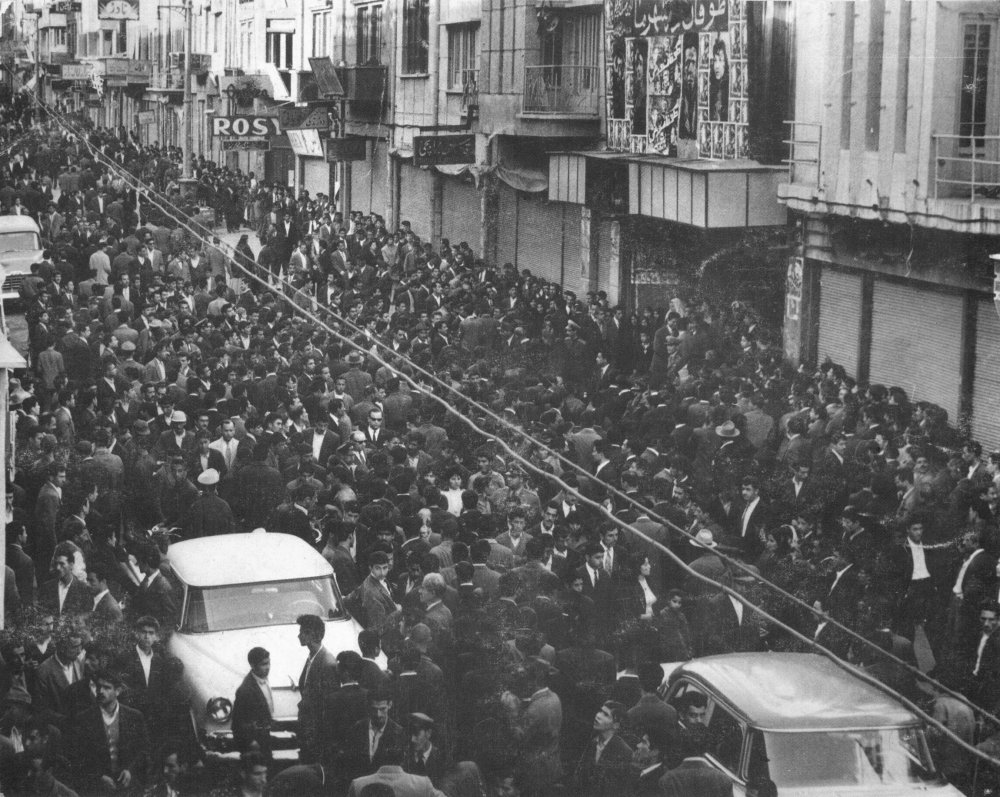
The premiere of Storm in Our City in Tehran
Credit: Abbas Baharloo
The massive success of Storm also helped Khachikian to establish his own studio, Azhir Film, with Joseph Vaezian. However, Khachikian temporarily left the studio after a bitter disagreement with Vaezian and lent his talents to the infamous producer Mehdi Misaqiye instead, for whom he achieved success with Midnight Terror (a remake of Gilda). But Misaqiye’s repeated interference and taking of undue credit left Khachikian disillusioned once again, and he returned to Azhir Film. He then made two films back to back, which became the studio’s biggest hits: Anxiety and Strike.
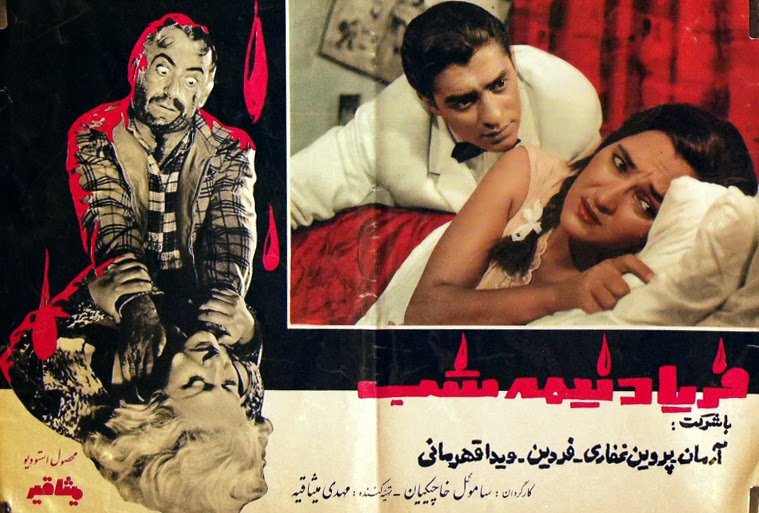
A lobby card for Midnight Terror (1961)
Anxiety (1962) is a tense story of deceit, blackmail, and murder (with a nod to Les Diaboliques) in which Khachikian maps the emergence of a new bourgeoisie class – with their modern homes, maids, American cars and subscription magazines.
Strike (1964) concerns a destitute married man (played by Khachikian regular Arman) whose daughter attracts the attention of both a corrupt colleague and a doctor who is treating his terminally ill wife. It begins as a rather tedious, clichéd melodrama but then Khachikian shifts the film into a meticulously designed spectacle of terror, as if taking revenge on the preceding drama. An ordinary house becomes a site of peril and a stage for perverse pleasures, with the director playing with filmic elements to the point of abstraction.
Khachikian explains this as his attempt to “revive the alphabet of film” in Iranian cinema: “I wanted to save Iranian cinema from roohozi [a popular and vulgar form of theatre]. From the first day onwards, it wasn’t the message or the content that I was concerned with. What I wanted was a precise cinema: action, correct editing, lighting and so on.”

Strike (1964): the spectacle of terror
His films moved fast, to the extent that he considered Persian too sluggish for his purposes. The dialogue scenes were therefore usually shot at 22fps to give them the pace they lacked. The lack of resources also had dynamic effects: at one point the only camera available to Khachikian was so worn out that he couldn’t shoot for more than 25 seconds at a time without the camera bursting into flames.
By this point in his career, the way in which Khachikian would develop his stories was clear: a dramatic, tightly edited opening followed by a documentary-style tour of Tehran, abruptly interrupted by a violent incident. The characters are derived, down to their appearance, from American films, but he introduced talented actors and future superstars such as Nasser Malek-Motii, Iraj Ghaderi and Reza Beik-Imanverdi.
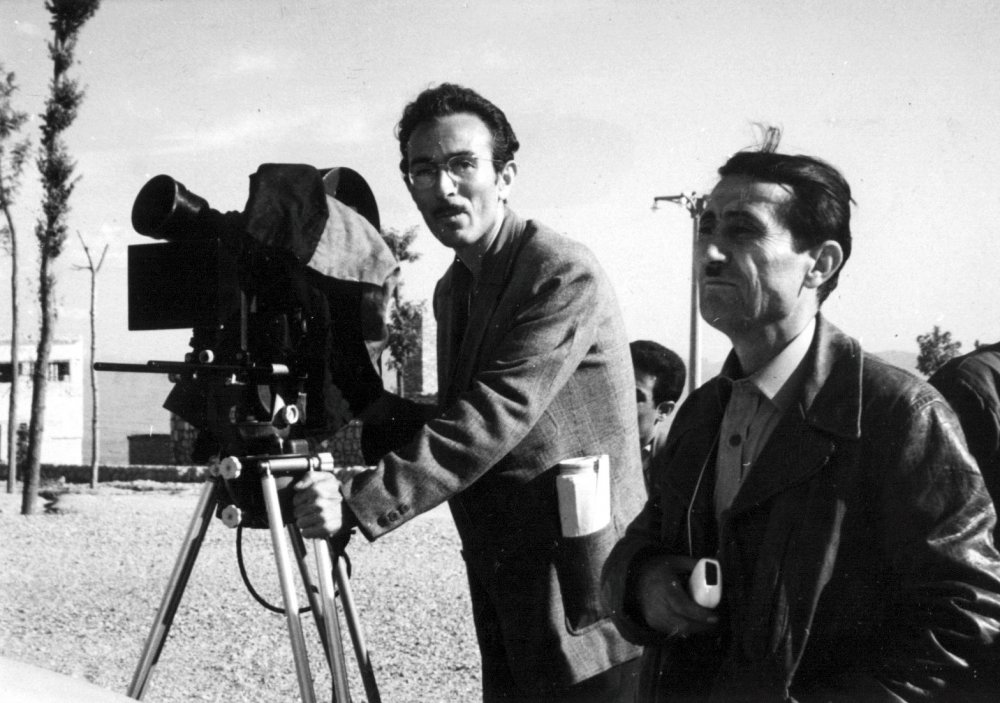
Storm in Our City (1958): Samuel Khachikian behind the camera.
Credit: Courtesy of Film Monthly
His technical influence was no less significant. Some of the great names of the Iranian New Wave, such as Massoud Kimiai and Khosrow Haritash, were his assistants, while Amir Naderi worked as his still photographer.
By 1965 the Iranian cinema was divided. The staggering success of The Treasure of Gharoun (Siamak Yasemi) meant a return to ‘pre-alphabet cinema’, shattering the dreams of Khachikian. On the other hand, the commercially unsuccessful, yet highly influential screening of Brick and Mirror (Ebrahim Golestan, 1966) marked the birth of a modern cinema made for arthouses. Khachikian belonged to neither group and in the following decade there was no space in between. With his usual humility he said: “I wasn’t either progressive or regressive, but a bridge between the two.”

White Inferno (1968): Samuel Khachikian introduced strong-willed women to Iranian cinema.
But he was progressive: he introduced strong-willed female characters to Iranian cinema. In his remake of Sabrina (1954) as Hengameh (1968), instead of two brothers competing over a girl, two sisters compete over a man. This semi-feminist attitude is also evident in one of his last successful films, Farewell Tehran (1966), in which a nurse fights bandits with a machine gun.
After 1965, however, his films showed clear signs of compromise and decline. After the emergence of the modernist directors in the 1970s and the rise of sex and violence in Iranian mainstream films, Khachikian quickly went out of fashion.
After the revolution
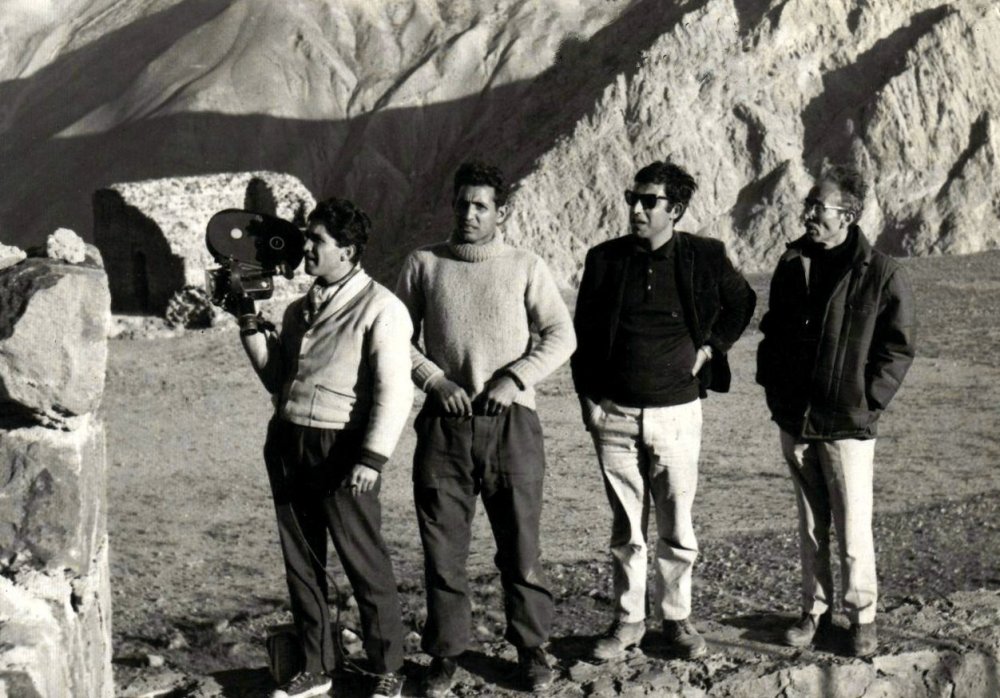
On the set of Farewell Tehran (1966): future Iranian New Wave director Massoud Kimiai stands next to Khachikian.
Following the Islamic revolution in 1979 Khachikian, like many of his colleagues, found himself out of work. His treatment of Islam was respectful and optimistic in even his cynical stories but the Westernised vision of Iran in his films was now vehemently rejected, along with the star system. Khachikian was slowly and deliberately sidelined and then banned.
The official cinema authorities turned to him during the Iran-Iraq war, however, to complete an action film about the air force called The Eagles (1984), which he did, mostly at the editing table. The film broke all box-office records but this success didn’t much change his position. Out of step with the revolution, he was unable to obtain a director’s guild card and had to sell his belongings to pay his rent. In his own words, from then on filmmaking became a means of stating, in a weak whisper, that he still existed.
“I was wasted. For 40 years, I was wasted,” he kept saying before he died, heartbroken in 2001, regretting that he couldn’t make the films he wanted to make and that he had not visited Armenia. When he died, a handful of Armenian soil was thrown on his coffin.
A lost kiss

Crossroads of Events (1955): Arman (left) and Nasser Malek-Motii
Organising a small retrospective of Khachikian’s thrillers for Il Cinema Ritrovato in Bologna has confirmed the tragic afterlife of his films. There are almost no camera negatives left, and most of the surviving elements are in a disastrous condition.
The National Film Archive of Iran has put together the best elements they have of Anxiety and Strike, and L’Immagine Ritrovata in Bologna has scanned the copies. There are also new prints of Crossroads of Events and Storm in our City. None of these copies appear to be complete, but there is beauty in their imperfection and one can still see in them bold marks of Iranian cinema’s master storyteller.
Khachikian showed many things for the first time in Iranian cinema, including a kiss, in The Crossroads of Events. It caused a sensation – and disgrace for actress Vida Ghahremani, who was alienated from many friends and family members. A still of the kiss exists, but sadly, the most complete version of the film is missing the frames that contain that moment.
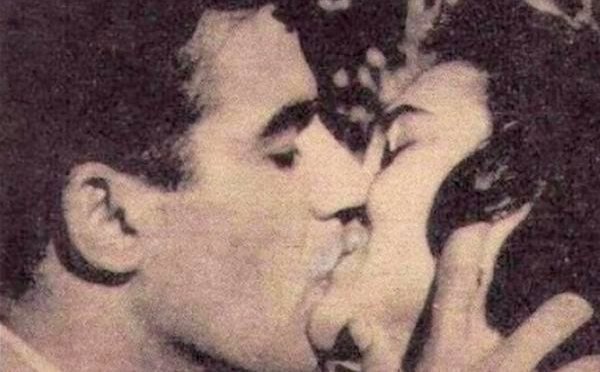
Crossroads of Events (1955): the lost kiss
Has it been lost for ever? It’s an apt metaphor for the cinema of Samuel Khachikian: a progressive, liberating moment of beauty lost to history.
-
The Digital Edition and Archive quick link
Log in here to your digital edition and archive subscription, take a look at the packages on offer and buy a subscription.





